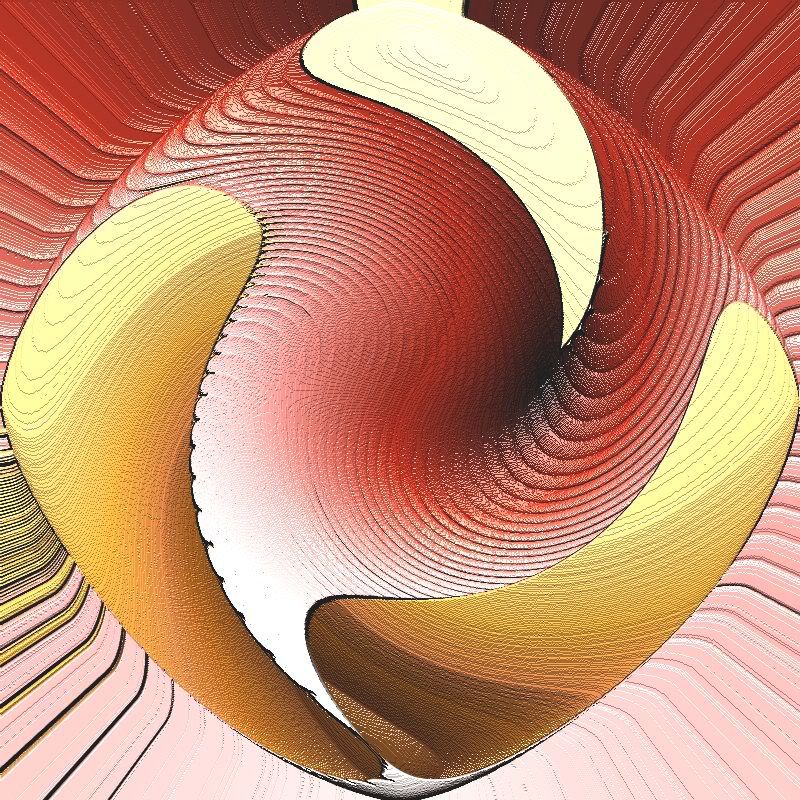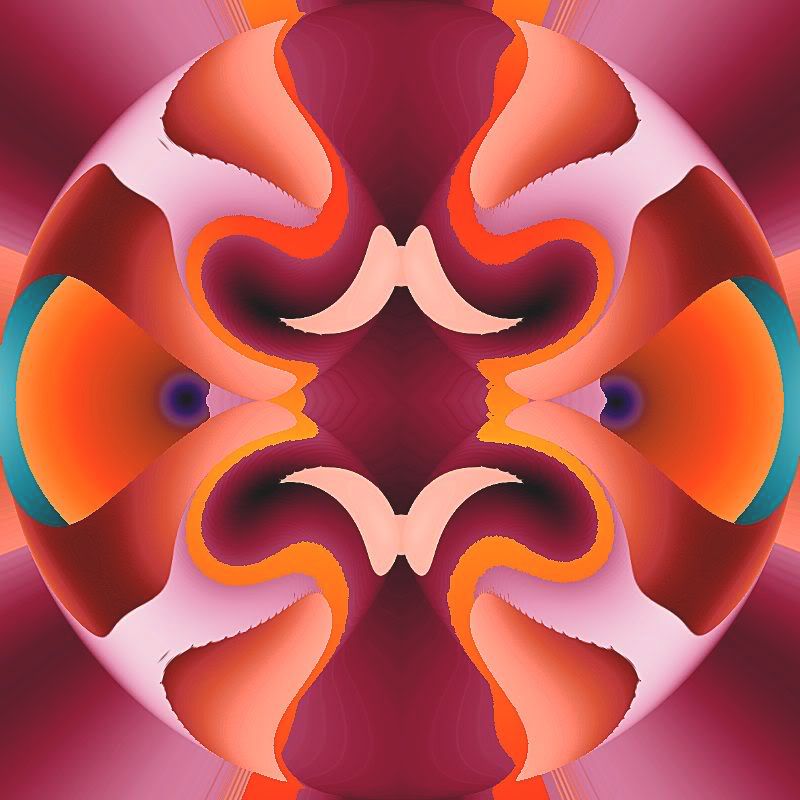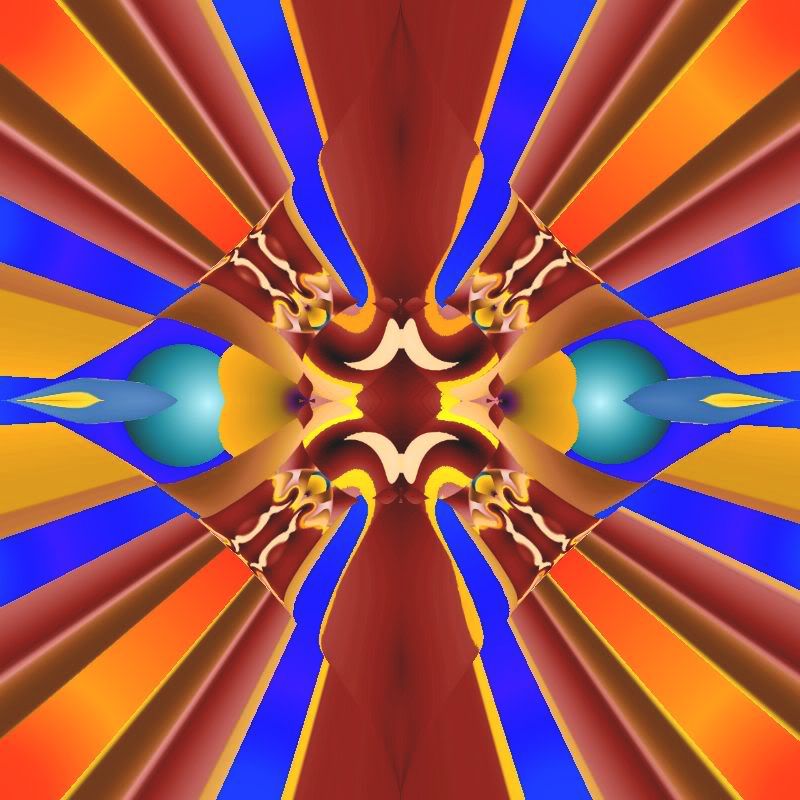(6PM EST – promoted by Nightprowlkitty)
 Wings 1 |
Every once in a while I get into a rhythm wherein my graphics all stem from the same emotional and artistic source. I make one graphic and keep on modifying it until the emotional impulse seems to have run its course.
This was apparently one of those “once in a whiles”, but instead of ending up with the usual 2 to 4 pieces, I ended up with at least 10 (ten as of the beginning of this piece, though more may be created and added by the time I hit the end.
The original piece had the feel of a wing, which of course lead insistently into the theme of flying.
 Wings 2 |
Feeling duty-bound to provide some teaching moments in all my diaries, I’ll start with some etymology. I also feel in necessary to include entertainment, so I’m adding some (hopefully) appropriate music.
fly (v.1)–v. “to soar through air,” Old English fleogan (class II strong verb; past tense fleag, pp. flogen), from West Germanic *fleuganan (cf. Old High German fliogan, Old Norse flügja, Middle Dutch vlieghen, German fliegen), from PIE *pleu- “flowing, floating” (cf. Lithuanian plaukiu “to swim”). Notion of “flapping as a wing does” led to noun sense of “tent flap” (1810), which yielded (1844) “covering for buttons that close up a garment.” Slang phrase fly off the handle “lose one’s cool” dates from 1825. On the fly is 1851.
wing (n.) –circa1175, wenge, from Old Norse vængr “wing of a bird, aisle, etc.” (cf. Danish, Swedish vinge “wing”), of unknown origin, perhaps from a Proto-Germanic *we-ingjaz and ultimately from PIE base *we- “blow” (cf. Old English wawan “to blow;” see wind (n.)). Replaced Old English feðra (pl.) “wings” (see feather). The meaning “either of two divisions of a political party, army, etc.” is first recorded c.1400; theatrical sense is from 1790. Verbal phrase wing it (1885) is from theatrical slang sense of an actor learning his lines in the wings before going onstage, or else not learning them at all and being fed by a prompter in the wings. The verb to wing “shoot a bird in the wing” is from 1802. The slang sense of to earn (one’s) wings is 1940s, from the wing-shaped badges awarded to air cadets on graduation. To be under (someone’s) wing “protected by (someone)” is recorded from c.1230. Phrase on a wing and a prayer is title of a 1943 song about landing a damaged aircraft.
 Wings 3 |
The story of Icarus and Daedulus is perhaps as good a place as any to begin attempting to mold an essay around the pictures and music. Daedulus was the Athenian craftsman who built the Labyrinth for King Minos of Crete. But he also gave Ariadne a ball of string, which she passed on to Theseus so that he could enter the Labyrinth and kill the Minotaur within. Personally I’ve always thought my story had some sort of link with mazes and the feeling of being trapped.
As the story goes, Minos imprisoned Daedulus and his son Icarus on Crete. Daedulus built two pairs of wings from wax and feathers so that he and Icarus could escape. He warned Icarus not to fly to closely too the sun, but youth, then as now, tend not to listen to the wisdom of their elders. Icarus did get too close to the sun, the wax melted and soon he had no feathers but was rather just flapping his arms. He fell to his death into what is now named the Icarian Sea, after apparently making it most of the way to Ionia on coastline of what is now Turkey.
 Wings 4 |
Now Theseus is also brings an interesting story. Legend claims him to be the founder of Athens, son of Aethra after she slept with the gods Aegeus and Poseidon on the same night. Again according to legend, Theseus established the cult of Aphrodite Pandemos (Aphrodite of all the People).
As the story goes (Hesiod), in order to become king of the Titans, Cronus cut off the genitals of his father Uranus, the sky god and first ruler, and threw them into the sea and Aphrodite was born from the sea foam created by that act.
Here’s an interesting snip from wikipedia:
Thus, according to the character Pausanias in Plato’s Symposium, Aphrodite is two goddesses, one older the other younger. The older, Urania, is the “heavenly” daughter of Ouranos, and inspires homosexual male (and more specifically, ephebic) love/eros; the younger is named Pandemos, the daughter of Zeus and Dione, and all love for women comes from her. Pandemos is the common Aphrodite. The speech of Pausanias distinguishes two manifestations of Aphrodite, represented by the two stories: Aphrodite Ourania (“heavenly” Aphrodite), and Aphrodite Pandemos (“Common” Aphrodite).
In Homer, Aphrodite, venturing into battle to protect her son, Aeneas, is wounded by Diomedes and returns to her mother, to sink down at her knee and be comforted. “Dione” seems to be an equivalent of Rhea, the Earth Mother, whom Homer has relocated to Olympus, and refers to a hypothesized original Proto-Indo-European pantheon, with the chief male god (Di-) represented by the sky and thunder, and the chief female god (feminine form of Di-) represented as the earth or fertile soil.
Dione was described as “the temple associate” of Zeus at Dodona. The three old prophetesses of the shrine, known collectively as the Peleiades, were probably her priestesses. They were named “the Doves” after the sacred bird of her daughter Aphrodite–who also possessed a temple within the shrine. – Link
I just knew I would find a way back to the theme of the graphics (which, I probably should mention, are clickable in order to produce larger versions in a separate tab):
 Wings 5 |
 Wings 6 |
I’ve always found the stories of the Greek gods and goddesses of interest, what with them being so ambivalent about gender constancy. If you are not familiar with that phrase, it is
A child’s realization that gender is fixed and does not change over time.
All children go through that realization, except, you know, those of us who don’t…and who somehow seem to need to be punished for failing at being a child.
Kohlberg emphasized that children actively self-construct their gender through a conceptual pattern in the mind called a schema. Gender schema models stress the roles of children’s selective attention to gender and their internal motivation to conform to societal standards and stereotypes of gender roles.
Those of us without the aforesaid motivation…or the motivation instead to refuse to conform to those standards and stereotypes will be persecuted to the full extent of cultural oppression. So we have to learn to fly on our own. And like Icarus…and Tom Petty…one of the important things we learn is that “coming down is the hardest thing”. This sort of flying doesn’t come with the safety of a parachute. Each of us knows that refusing to conform to gender standards and stereotypes comes with the potential of encountering someone else’s fixed and rigid image of “how things are”, and that someone may at any moment decide that our continued existence on this plane of existence is no longer warranted.
But I’ve spent most of my life battling the stereotypes of someone else and I’ve just figured it’s not the time to quit now. Keep on keeping on, as the saying goes.
And, of course, I have more graphics to go, so we can’t end the words yet. Aji mentioned the other day that at least one of the graphics (#3) brought the thought of the Peyote Bird.
 Wings 7 |
I think this one might be my favorite. The wings in the center remind me of those of the peyote bird, and the colors are those I associate with the pueblo and this area – earthy reds/oranges/golds and deep blues. Just stunning.
For those of you who don’t know the story of the peyote bird, I offer this link to Shirley Twofeather’s Story of Grandfather Peyote, as told by Leonard Crow Dog at Winner, Rosebud Indian Reservation, South Dakota, in 1970.
And, in case you didn’t know it, I’m a caterpillar, crawling for your love. The imagery of the caterpillar metamorphosing into a butterfly has proven to be very difficult to avoid grasping for any transwoman trying to write. It’s too easy to find the process to be too much of a depiction in nature of our process…much more so than “cutting off your dick” that some seem to prefer.
 Wings 8 |
But it is by no means the only imagery. On Sunday it will be my pleasure to introduce host DK Greenroots once again, this time with a photo-essay from the Aquarium of the Pacific on Medusae, ponies and dragons, being respectively, jellies, sea horses, and sea dragons. The reproductive methods of all three are vastly interesting to anyone interested in non-stereotypical mating behavior in the animal kingdom.
I hope to see you then. In the meantime maybe it wouldn’t be such a bad thing, now that it is March, to remind everyone that my community was told last fall that we should wait until this month before discussion of the Employment Non-Discrimination Act (ENDA) would recommence…and that there is no sign as yet that they will do so. For anyone wondering, ENDA was first introduced in 1994…so this is hardly a pony we are talking about. In 1996 it was voted down in the Senate 50-49. So this should not be pie-in-the-sky. Shouldn’t we have moved forward since then?
As of now, H.R. 3017 has 198 cosponsors in the House, 192 Democrats and 6 Republicans.
 Wings 9 |
People want us to behave as “normal people”. Most of us would be happy to live “normal” contented lives. But it is hard to do that if our employment is threatened at every turn. Believe it or not, our lives…and the quality of them…mean as much to us as the life of anyone else mean to them. Meaningful employment is part of that, along with having a stable place to live…which hasn’t arisen on anyone’s legislative docket as of yet, that I know of.
Some people say that incrementalism is the key. But no movement at all is not incremental movement. It is no movement. And no movement is just not good enough behavior to expect of this Congress and this Administration.
For any of my readers who may be transfolk…or anyone else who wants to help us lobby Congress, March 16 is ENDA Lobbying Day. Scholarships are available from Bilerico for anyone from one of the following eight states, who is a currently-unemployed LGBT person, unemployed because of job discrimination based on sexual orientation or gender identity:
Alaska
Arkansas
Florida
Indiana
North Carolina
North Dakota
Ohio
West Virginia
 Wings 10 |
Maybe in the end, the pieces started to lose their “wingedness”, but that is up to observers other than me.

9 comments
Skip to comment form
Author
…and I remembered this:
and not just your art.
Would it be possible to animate the process? I would love to watch the images morph,perhaps to music.
Peace